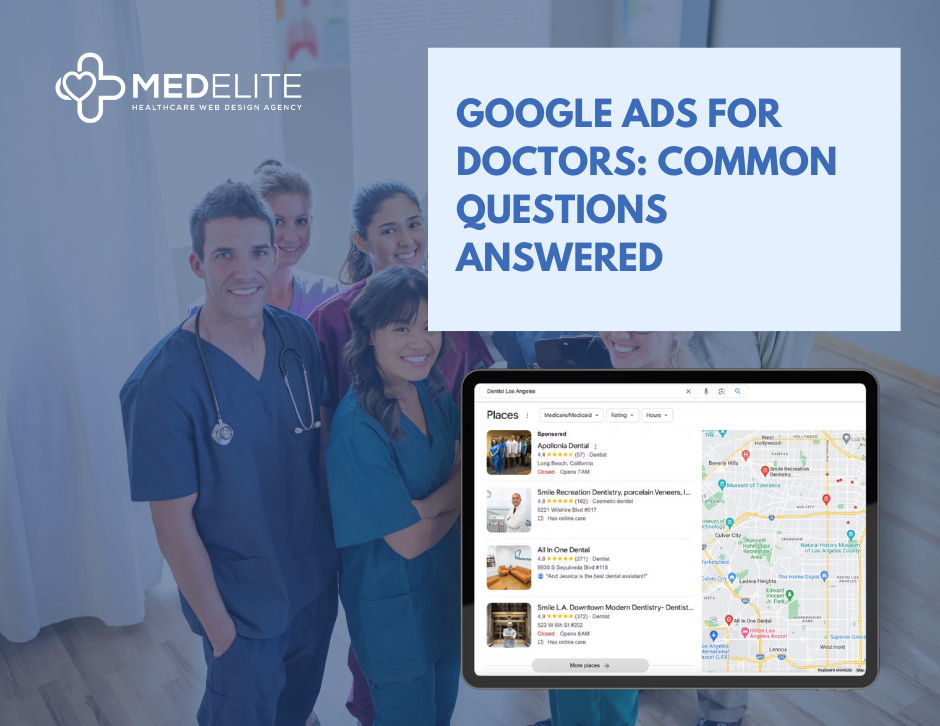How to Choose the Right Images for Your Medical Website
- Marta Alexandrovna

- Mar 16
- 4 min read
Updated: May 8

Half a second.
That's all it takes for a potential patient to decide whether they trust your medical practice online. And guess what's doing most of the convincing? Not your credentials. Not your services. Your images.
I spend my days helping medical practices fix their websites, and almost every single one makes the same mistake – choosing images that actively push patients away instead of pulling them in.
The Silent Patient Repellent

Let me paint you a picture (pun intended). The doctor with crossed arms and a forced smile. The suspiciously diverse meeting where everyone points at the same laptop. The patient nodding appreciatively while a doctor gestures at a chart.
Sound familiar? These stock photo clichés are everywhere in healthcare.
And they're killing your credibility.
Stanford researchers found 75% of users make judgments about trustworthiness based on visual design. When your visitors see these fake-looking images, they mentally check out before reading a word.
But don't just take my word for it. In 2024, healthcare conversion specialists tracked appointment request rates and found practices using authentic photography saw 34% higher booking rates compared to those using generic stock images.
Breaking the Medical Image Curse
So what makes a good medical website image? It's not what you think.
Most practices assume "professional" means "clinical" – stark lighting, perfect poses, everything sanitized within an inch of its life. But humans connect with humanity, not perfection.
Ask yourself: Would this image make sense on MY site, or would it work equally well on any medical site in the country? If it's the latter, that's a red flag.
A friend recently told me about visiting three different orthopedic websites. "They all used the exact same stock photo of a doctor examining a knee," she laughed. "How was I supposed to tell them apart?"
She ended up choosing the practice with photos of their actual waiting room and staff. "At least I knew what to expect when I walked in."
From Meh to Memorable: A Different Approach

Instead of organizing your medical image strategy into rigid categories, think about the emotional journey your patients take:
Fear →
Curiosity →
Hope →
Action
Every image should move them along this path.
But here's the catch – different specialties trigger different emotions. Pediatrics needs playful reassurance while oncology requires compassionate confidence.
One neurosurgery practice I know ditched their sterile clinical shots for images of their doctors engaged in hobbies – one playing chess, another rock climbing. Surprising? Yes. Effective? Absolutely. Bookings jumped 22% in two months.
Why? Because patients saw them as humans first, surgeons second.
The Legal Stuff Nobody Wants to Deal With
HIPAA violations through website imagery happen all the time, and the penalties can be brutal.
A midwest dermatology practice learned this the hard way after using before/after photos without proper marketing consent. The result? A $15,000 fine and a PR nightmare.
And copyright? Even worse. A single unauthorized image can trigger fines up to $30,000.
So what's a practice to do? Options exist, even on tight budgets:
Medical-specific stock libraries cost more but offer healthcare-relevant images with proper licensing
Creating simple graphic illustrations for complex concepts
Showing your actual space and team (the most effective approach)
Technical Stuff (But Keep Reading, I Promise It's Important)

Big, beautiful images look great but can torpedo your site speed. And since 53% of mobile users abandon sites taking longer than 3 seconds to load, those gorgeous-but-massive photos might be costing you patients.
Three technical must-dos:
Keep images under 200KB
Resize them before uploading
Use modern formats like WebP when possible
And please, please add alt text descriptions. They help visually impaired users understand your content and boost your SEO.
Finding Better Images Without Losing Your Mind

Forget generic stock sites. Nobody needs another photo of a stethoscope on a keyboard.
Budget for at least some custom photography. Yes, professional shoots run $1,500-3,000, but the ROI makes it worthwhile.
Can't swing that right now? Start small:
Get professional headshots of your providers
Take authentic photos of your actual facility
Capture genuine team interactions (not posed meetings)
One orthopedic surgeon I know simply had a staff member take smartphone photos of his actual exam rooms, waiting area, and team during a lunch break. He replaced his stock images with these authentic shots and saw an immediate bump in appointment requests.
"Patients tell me they chose us because they knew exactly what to expect," he explained. "No surprises."
Quick Wins You Can Implement Today
Want to make immediate improvements?
First, ditch any image that could appear on your competitor's site. Generic = forgettable.
Second, add captions to photos. They get read 3x more than body copy and create context.
Third, test your images with this simple question: "If I were scared about my health and looking for help, would this image make me feel better or worse?"
Because ultimately, medical images should do one thing: make anxious patients feel they're in good hands.

At MedElite Agency, we build healthcare websites patients connect with emotionally. Our team understands what images convert visitors into patients.
Want a fresh perspective on your current website imagery? Reach out to our healthcare design team. We'll help your practice stand out in a sea of medical clichés.





Comments